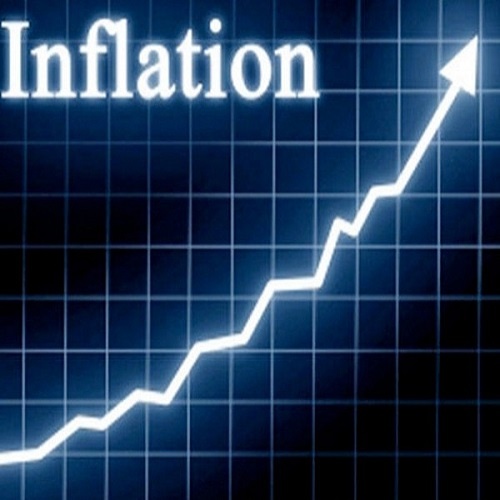New Delhi: In the latest assessment of India’s Consumer Price Index (CPI) inflation for May 2024, experts from India Ratings and Research, the PHD Chamber of Commerce and Industry, and CRISIL shared their insights, highlighting both positive trends and lingering challenges.
The headline CPI inflation for May 2024 marginally decreased to 4.75 per cent from the previous month’s 4.83 per cent.
This moderation, as analyzed by Sunil Kumar Sinha, Senior Director & Principal Economist, and Paras Jasrai, Senior Analyst at India Ratings and Research, was attributed to factors such as core inflation moderation and sustained deflation in fuel and light prices.
However, food inflation remained stubbornly high at 8.7 per cent, posing challenges, particularly for lower-income households heavily reliant on food items.
Sinha and Jasrai expressed concerns over the prolonged period of elevated food inflation, which has persisted above 8 per cent for seven consecutive months. He highlighted the adverse impact on indicators such as consumer non-durables, whose output grew by only 2.4 per cent year-on-year in April 2024. Additionally, adverse weather conditions, especially heat waves in northern regions, and recent price hikes announced by dairy cooperatives are expected to further fuel food inflation woes in the coming months.
Sinha and Jasrai noted, “The core inflation though edged down further to 3.1 per cent in May 2024. This is the lowest print in the 2011-12 series and is reflective of three things a) impact of tight monetary policy, b) the weak consumer demand and c) relatively stable inputs costs. The services inflation dipped further to 2.7 per cent in May 2024, lowest since the data is available.”
They added, “Despite some moderation in headline inflation, the fight on inflation front is far from over as food inflation continues to high and if nor checked it can give rise to a wage-price spiral. 42.6 per cent of the total commodities in the CPI basket still have an inflation above 4 per cent.”
India Ratings and Research anticipate retail inflation to remain at 4.8 per cent in June 2024, with expectations of a downward trajectory below 4 per cent in the second quarter of FY25 due to favorable base effects. However, uncertainties surrounding food inflation, driven by climate-related events, raise doubts about sustained inflation close to the 4 per cent target.
Commenting on the CPI inflation announcement, Sanjeev Agrawal, President of PHD Chamber of Commerce and Industry, appreciated the continued softening trend, with CPI inflation reaching 4.7 per cent in May 2024.
He noted steady decreases in housing inflation and clothing and footwear inflation as positive drivers.
Sanjeev Agrawal, President, PHD Chamber of Commerce and Industry commented, “It is appreciable that the CPI inflation has exhibited a continued softening stance to 4.7 per cent in May 2024. Steady softening in housing inflation from 2.6 per cent in April 2024 to 2.5 per cent in May 2024 and clothing and footwear inflation from 2.8 per cent in April 2024 to 2.7 per cent in May 2024, are the main drivers of the softening inflation trajectory. However, inflation in food and beverages in May 2024 is still posing a challenge.”
He added, “The government’s proactive measures to strengthen supply chains are contributing to the lowering of inflation in many items. Going forward, an increase in kharif production, backed by projection of above-normal southwest monsoon, is expected to contribute to further easing of the CPI inflation.”
However, Agrawal highlighted the persistent challenge posed by food and beverages inflation. He praised the government’s proactive measures to strengthen supply chains, contributing to the moderation of inflation in several items.
Dipti Deshpande, Principal Economist at CRISIL, in response to the Consumer Price Index (CPI) and Index of Industrial Production (IIP) data released today.
Deshpande commented, “The southwest monsoon has arrived on time, now its progress will influence how food inflation moves over the next few months. Food inflation has stayed above 8.5 per cent for four months now. In May, seasonal pressures kept it at 8.7 per cent unchanged from April. From June, we expect some softening as a supportive base will help bring down food inflation.
She added, “Further easing will depend on the distribution of rainfall. For this fiscal, we expect inflation to average 4.5 per cent — assuming softer food and benign non-food inflation.”
Deshpande emphasised “Stable industrial growth,” as indicated by the Index of Industrial Production (IIP), which moderated to 5 per cent year-on-year in April from 5.4 per cent in March.
She said, “Infrastructure and construction goods IIP growth strengthened, indicating continued support from government’s infrastructure spending and private real estate activity. Domestic demand could see some rebalancing this fiscal as rural demand catches up with urban consumption. The urban economy, which has been strong so far, could be tempered by tighter credit conditions this fiscal.”
She added, “Retail credit growth has been moderating in recent months. The Reserve Bank of India’s recent survey showed moderating consumer confidence in the urban areas. The government’s capital expenditure continues to be healthy, but is expected to be lower than last fiscal given the mandate of fiscal consolidation.”












